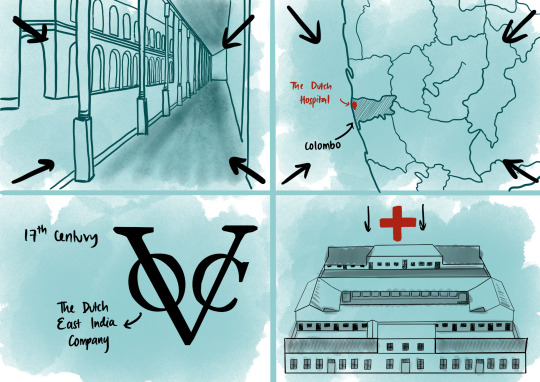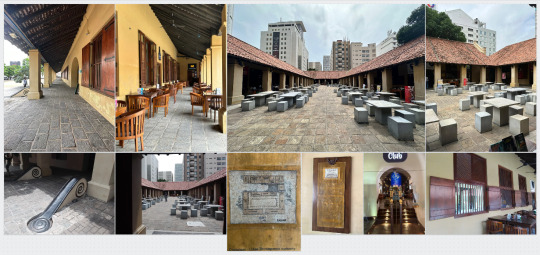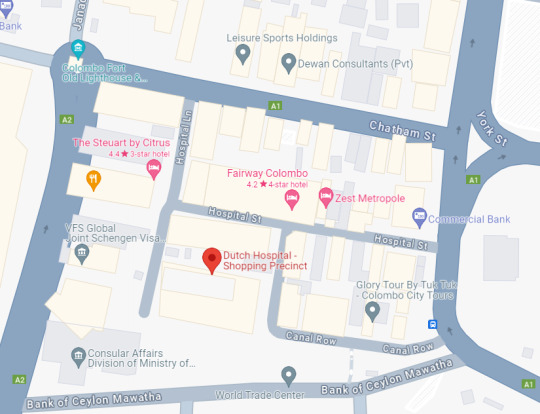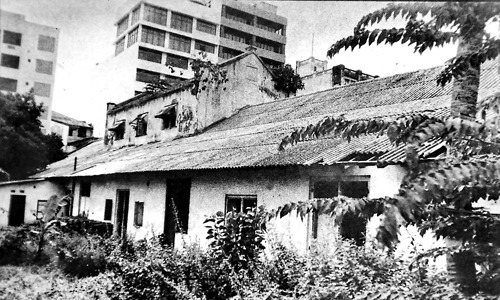Text
My Final Learning Outcome
My final thoughts on this module is how time management was handled this time. I'm quite happy with the final product as i did the best i could for this module again.
0 notes
Text
Short Film - Draft
--- Task 2: Sonic Storytelling ---
0 notes
Text
Recreating Sounds using Foley
Re-creating sounds can be a bit tricky, as you're trying to imitate a sound or make the exact sound of how it sounds like, but mostly since its foley, we're trying to recreate sounds using different object.
There were a few group activities we did in class, as an introduction to Foley. It was a huge learning curve for me and for the others as there were sounds we recreated that came out the way we wanted it to, and some did not. In the end, we all learned something new and I realised how much impact sound has on an animation or any type of film!
WIP :

--- Task 2: Sonic Storytelling ---
0 notes
Text
Research - YouTube References
youtube
youtube
--- Task 2: Sonic Storytelling ---
0 notes
Text
Research on Foley Sounds
History of Foley Art
" Foley was initially employed in the 1920s during live radio broadcasts of performances. Rather than relying on low-quality, unstable sound effects from a phonograph, radio stations recruited sound artists to produce sounds on the fly. Jack Foley, the most well-known of those early radio sound artists, went on to pioneer the approaches and techniques that foley artists still employ today in the film industry.
The Three Kinds of Foley Sound
Foley sounds are divided into three groups:
1. Because footsteps are more difficult to correctly capture while shooting a scene, the sound of footsteps is the most common production sound a foley artist makes. Artists may duplicate steps from virtually any shoe on nearly any surface in Foley recording facilities, which include several different types of shoes and floor surfaces.
2. Movement: A subtle sound effect that improves a scene is the sound of movement, such as two people brushing past each other.
3. Specifics: Any sounds that aren't moving or footsteps, such as a phone ringing or a door creaking, are considered specifics.
What Goes on during a Foley Recording Session?
Foley artists employ unconventional techniques to recreate immersive, natural-sounding sounds. Foley artists break down a scene into the individual sounds they need to capture in a typical recording session, then reproduce and record each one individually. They record in real-time as they watch the movie to ensure that the audio and pictures are in sync.
Foley artists, for example, created the sounds of a door opening, a door closing, footfall on laminate with the character's style of shoes, and eventually someone falling into a padded vinyl chair in a scenario when a man enters a diner and settles down at a booth.
Some noises, such as jingling vehicle keys, are easy to recreate since the foley artists may use the real object to make the sound. Some noises are more difficult to imitate, so the foley artists come up with inventive solutions, such as using cellophane to simulate crackling fire. "
--- Task 2: Sonic Storytelling ---
0 notes
Text
Task 2: SONIC STORYTELLING
In this brief, we were required to recreate sounds for an existing piece of animation, which is expected to be 1-2mins long. I selected
A Witch's Ghosts by Michael Relth Art
0 notes
Text
Work In Progress pt.2
--- Task 1: Exploring Dutch Hospital ---
0 notes
Text
Work In Progress
Recording of the script, : wasn't much of a hassle as i chose to record each paragraph separately, in case i felt like i could make a few changes as I go.
< unedited script >
--- Task 1: Exploring Dutch Hospital ---
0 notes
Text
Storyboards

--- Task 1: Exploring Dutch Hospital ---
0 notes
Text
Final Script
Ever heard of the Old Colombo Dutch Hospital? It's this ancient building right in the heart of Colombo, Sri Lanka, with a super interesting history.
Let's take a trip back in time, shall we?
In the late 1600s, during the Dutch colonial days, they built this place. Originally, it was a hospital for Dutch soldiers and workers from the Dutch East India Company. Being close to the harbor made it handy for moving patients from ships to the hospital. It was a big deal for Dutch sailors' health.
As we look at this old map here, there used to be a canal next to the hospital. But when the British took over, they filled it up. Now, it's just a street called Canal Row. Many changes were going on as there were changes in the colonial rule.
Now, let's talk about the medical crew. The main surgeons were often graduates from places like Amsterdam or Leiden. Even regular soldiers with some medical skills worked there.
Barend Alleman was the second surgeon for a whopping 34 years. He made a bunch of improvements during his time. Now along with him, was also a famous surgeon named Paul Hermann. They called him the 'father of botany' in Sri Lanka.
After the British took over from the Dutch, the hospital lost its shine. Over time, it played different roles, from hosting the Colombo Apothecaries to being the Colombo Fort Police Station in the 1980s and 1990s.
But the story doesn't end there!
Despite taking a hit during the late 1900s civil war and sitting empty for a while, in 2011, they made necessary renovations. Now, it's a lively shopping and eating spot. But remember, as you wander around, this place is more than just shops and food. It's a living reminder of Sri Lanka's history, carrying stories from centuries past.
0 notes
Text
The type of Documentary Style I Chose
I had an idea of a background character representing me (the narrator) so I will be choosing the Expository Documentory mode.
--- Task 1: Exploring Dutch Hospital ---
0 notes
Text
Final Script - Draft
Hey there, history buffs and curious minds! Today, we're taking a trip back in time to unravel the story behind the Dutch Hospital in Colombo, Sri Lanka. Buckle up for a journey through the centuries and some seriously cool architecture!
Picture this, it's the 17th century, and the Dutch East India Company is rocking the seas. They decide, "Hey, let's build something awesome in Ceylon." And voila! The Dutch Hospital springs to life in 1681. Originally a hospital for Dutch sailors, it quickly became the hub of all things trade and commerce.
Now, the Dutch weren't just practical; they had style too! The hospital's design was a mashup of Dutch colonial and local influences. Think open courtyards, breezy verandas, and a vibe that says, "We're here to heal and seal deals!"
Fast forward through the years, and the Dutch Hospital went through a makeover or two. It saw Dutch rule, colonial comings and goings, and finally, an independent Ceylon. But through it all, that killer architecture stayed put.
So, what's the Dutch Hospital up to these days? Drumroll, please! It's now a buzzing commercial and cultural hub, a place where the past parties with the present. The charm's intact, from cobblestone paths to chic shops and fancy eateries.
Today, when you stroll through the Dutch Hospital, you're not just walking on cobblestones; you're stepping into history. It's like time travel but with better snacks!
As the crowds come and go, The Dutch Hospital winks and whispers tales of times gone by. It's not just a place; it's a vibe, inviting you to be part of Colombo's coolest story.
Cheers to history and good times!
--- Task 1: Exploring Dutch Hospital ---
0 notes
Text
Writing a script
Writing a script wasn't too new to me, but there's always room to learn more!
I used the knowledge I had from my school time and wrote down the points I wanted to touch on in my animatic documentary. I didn't want to spend too much time on it as I have only so much time given to me, so I decided to go with my initial jotted-down script.
--- Task 1: Exploring Dutch Hospital ---
0 notes
Text
Research - YouTube references
youtube
youtube
youtube
--- Task 1: Exploring Dutch Hospital ---
0 notes
Text
Research - Types of Documentaries
For Task 1, as mentioned before, we are required to make an animatic in the style of a documentary about the chosen location: The Dutch Hospital.
There are 6 types of documentaries ;
Poetic Mode: The main objective of this type of documentary is not to create a film with a traditional narrative but rather to look into presenting patterns and associations to create meaning and evoke an emotional response from the possible audience.
in simpler words, it is often achieved by arranging imagery into rhythms and juxtapositions.
Expository Documentary: This documentary-style has a different approach, where a specific point of view or argument about a subject and a narrator often speak directly to the viewer, emphasizing the relationship between the images presented on-screen and offering verbal commentary.
Observational Mode: This type of documentary filmmaking aims to record realistic, everyday life without intrusion. Observational documentary mode exists on a spectrum between poetic documentary and expository documentary.
Participatory Mode: The documentary itself is a form of film production that directly involves people and communities in a collaborative and inclusive filmmaking process.
Reflexive Documentary: This focuses on the relationship between the filmmaker and the audience, pushing viewers to reflect on their perceptions and re-analyze their notions of truth.
Performative Mode: This type of documentary filmmaking is more personal and shares very specific ideas on history, politics, and parties using personal experience and the relationship the filmmaker has with the subject.
--- Task 1: Exploring Dutch Hospital ---
0 notes
Text
Research - Visiting the Dutch Hospital
I wanted to go back to the Dutch hospital to focus more on the architecture and the history behind it. I decided to make a small collage of a few of the pictures I took (I took too many)

At first glance when i went to this location, i was completely overwhelmed at how many people visit this place, especially on working days...
however, as i went through the place as a citizen of Sri Lanka, i noticed how much history this place carries, and i wanted to dig more into it.
--- Task 1: Exploring Dutch Hospital ---
0 notes
Text
Research
The Dutch Hospital building, originally conceived as a medical facility for soldiers and personnel of the Dutch East India Company, played a crucial role in servicing Dutch seafarers due to its strategic proximity to the harbor. Historical paintings depict a bygone era when a canal ran alongside the hospital, tracing the path now known as Canal Row Lane. The British, following their capture of the city, filled in this canal, altering the landscape.

In its heyday, the Dutch Hospital boasted cutting-edge facilities for its time. While proper beds were scarce in Ceylon, patients were provided with reed mats, and the critically ill or affluent personalities enjoyed the luxury of straw mattresses imported from Thoothukudi in India.
Noteworthy among the hospital's medical staff was Alleman, the surgeon with the longest service, who tirelessly worked to enhance conditions and provisions. However, the most celebrated figure in the hospital's history was Paul Hermann, a surgeon who served from 1672 - 1679 and is hailed as the father of botany in Sri Lanka. Despite these contributions, the hospital's decline began with the British takeover, leading to its eventual abandonment.
Post-independence, the vacant hospital found varied uses, from housing the Colombo Apothecaries to serving as the Colombo Fort Police Station. The late 20th-century Civil War inflicted damage, further relegating the structure to abandonment.

In a transformative turn of events in 2011, the Old Dutch Hospital underwent extensive renovation, restoring it to its original splendor. The refurbished premises now stand as a vibrant shopping and dining arcade, breathing new life into this historic edifice.

--- Task 1: Exploring Dutch Hospital ---
0 notes